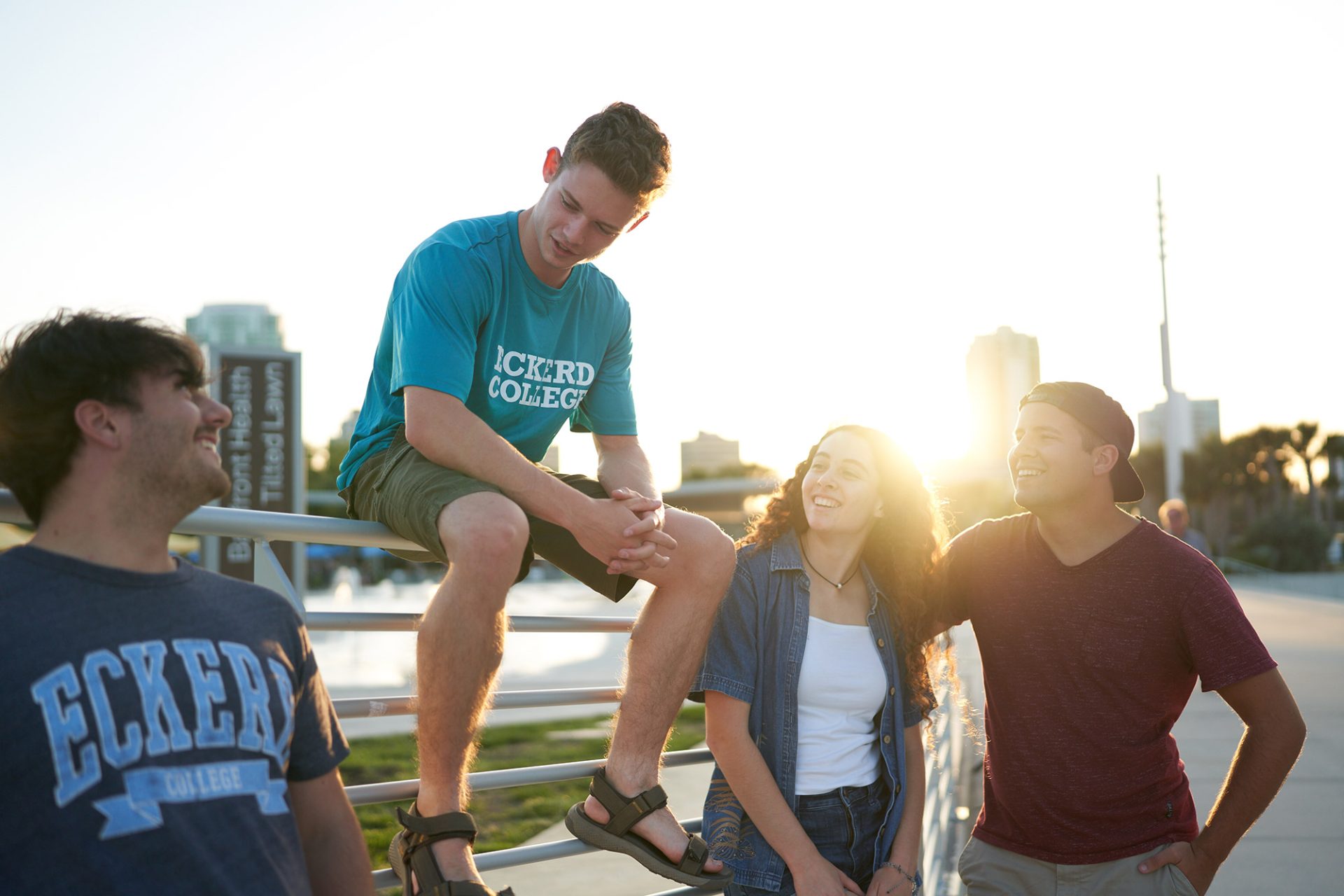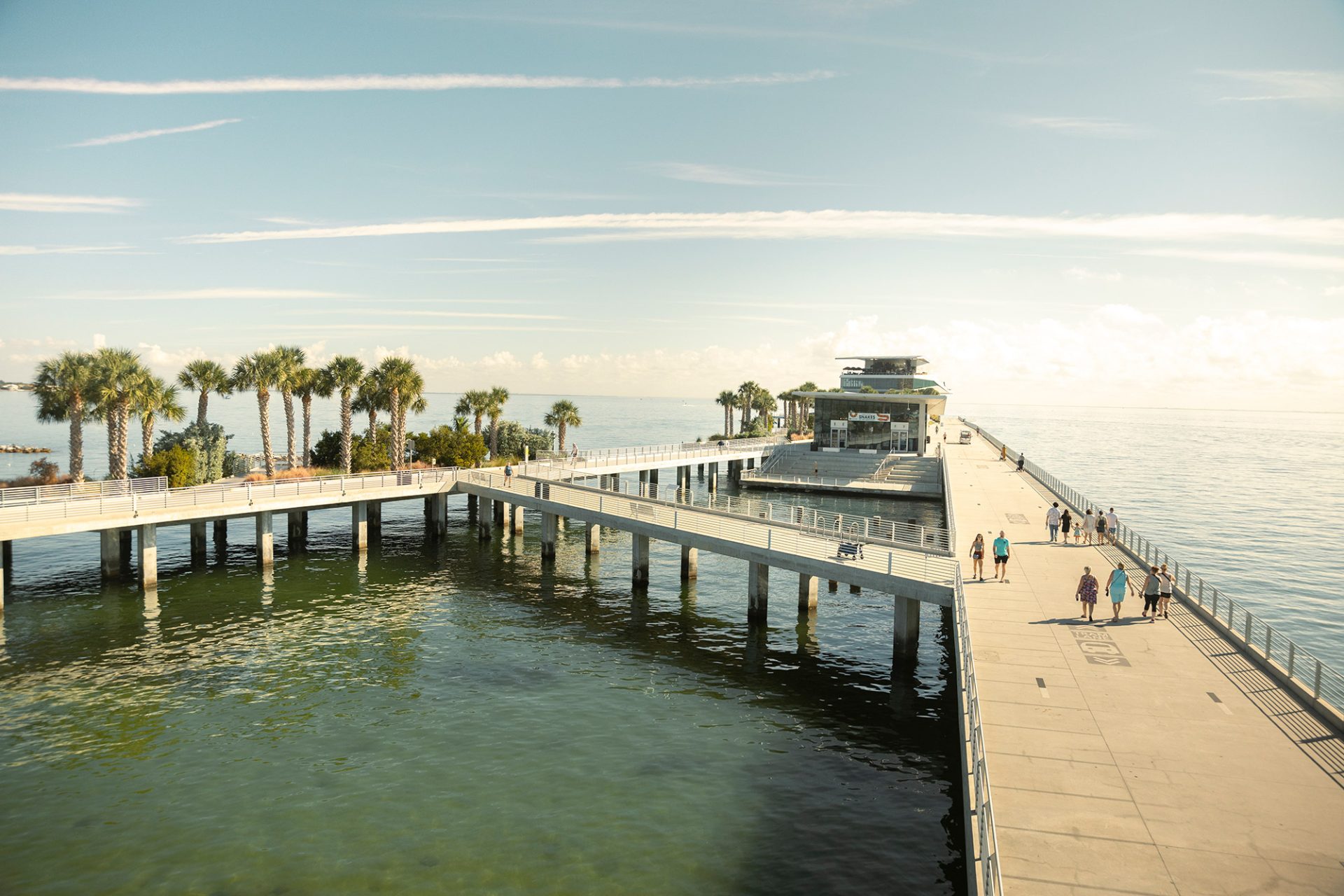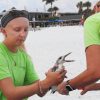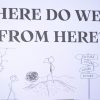The nation is catching on to what Eckerd College has always known—there are few places quite like St. Petersburg, Florida.
Outside magazine ranked the home of Eckerd’s 188-acre, private liberal arts campus on Florida’s Gulf Coast as one of the “15 Happiest Places to Live in the U.S.” for its Best Towns 2023 Happiest Edition.
Researchers combed national survey data on overall well-being, public land, affordability, climate-change response and inclusivity—and narrowed the list to 15 cities with a population of 50,000 to 500,000.
According to the magazine, “Set on the southern end of the Pinellas Peninsula, Saint Petersburg is a paradise for those who love beaches, sports, arts and getting outdoors year-round. The Sunshine City boasts 244 miles of shoreline. Downtown’s urban waterfront is regularly filled with paddleboarders, Rollerbladers and volleyball players. Just south of the city, the world’s longest fishing pier runs over four miles along the iconic Sunshine Skyway Bridge.”
St. Petersburg made the cut along with Reno, Nevada; Wilmington, Delaware; New Orleans, Louisiana; Cincinnati, Ohio; Charlottesville, Virginia; Hood River, Oregon; Minneapolis, Minnesota; Glenwood Springs, Colorado; Harrisburg, Pennsylvania; Plano, Texas; Anchorage, Alaska; Madison, Wisconsin; Frederick, Maryland; and Tacoma, Washington.
“St. Petersburg has been ranked the best municipal park system in Florida. This ranking is created by the Trust for Public Land, which ranks the 100 most populous cities in the U.S. to create a ParkScore® ranking,” says Visiting Assistant professor of Environmental Studies Tyler Cribbs ’16, Ph.D. “St. Petersburg is currently ranked 15th [in our nation] in this index. The Outside mag’s article seems to utilize a very similar process to select their highlighted cities.”
Associate Professor of Environmental Studies Noëlle Boucquey, Ph.D., says her own research on “third spaces” and fishing in St. Petersburg corroborates the magazine’s conclusion about the positive mental health benefits to having shared public spaces that stretch across class strata.
“Having public open space and common space is a huge factor in people’s overall well-being—which usually translates into some level of happiness,” she explains.
Boucquey and Associate Professor of Anthropology Jessie Fly, Ph.D., did extensive research on urban fishing, publishing two studies based on surveys of the people who use public piers and bridges to cast their lines.
“During that work, we often heard people describing fishing benefits that had nothing to do with fishing itself,” Boucquey says. “It was more about the benefits of enjoying the coastal area, bonding with friends and family, and making new friends. There is a huge social component that is only made possible by the infrastructure to support shore fishing in this area.”
Most of St. Petersburg’s piers, seawalls and other coastal areas are free and open to the public—making them ideal congregating spots for the community, according to Boucquey. “The amount of ethnic and financial diversity found in the local fishing community is a huge range, from more than six-figure salaries to poverty wages using the same spaces,” she says.
That inclusivity also is reflected in the city government, which has instituted policies so different from the state’s that it has earned a perfect score (or better) for 10 consecutive years from the LGBTQ+ advocacy group the Human Rights Campaign.
“There’s a lot to love in St. Pete, for sure,” Boucquey adds.















